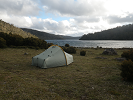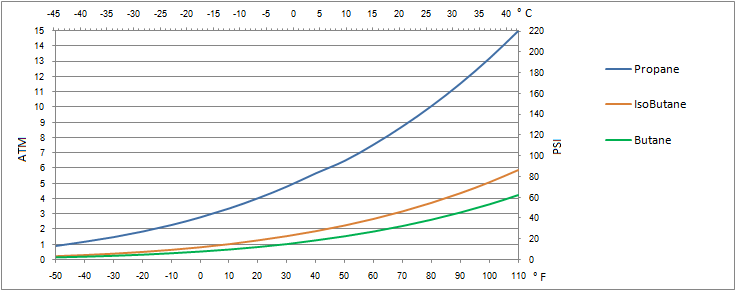Gas Saver review
Forum rules
TIP: The online Bushwalk Inventory System can help bushwalkers with a variety of bushwalk planning tasks, including: Manage which items they take bushwalking so that they do not forget anything they might need, plan meals for their walks, and automatically compile food/fuel shopping lists (lists of consumables) required to make and cook the meals for each walk. It is particularly useful for planning for groups who share food or other items, but is also useful for individual walkers.
TIP: The online Bushwalk Inventory System can help bushwalkers with a variety of bushwalk planning tasks, including: Manage which items they take bushwalking so that they do not forget anything they might need, plan meals for their walks, and automatically compile food/fuel shopping lists (lists of consumables) required to make and cook the meals for each walk. It is particularly useful for planning for groups who share food or other items, but is also useful for individual walkers.
71 posts
• Page 2 of 3 • 1, 2, 3
Re: Gas Saver review
I get the impression that the purging valve is to allow air in a long run of hose or pipe to be expelled so that only gas goes to the end purpose - mainly an appliacance rather than a cylinder. This doesn't apply in canister to canister refilling. This purging minimises any flickering flame when the appliance is first lit and possible extinction of pilot lights etc.
There is no real need to cool the receiving canister - all it achieves is a quicker transfer. When the valve is opened the pressure in the canisters attempts to equalise. If the upper canister is at a higher pressure enough liquid gas is forced into the lower canister and once the pressures equalise gravity takes over. If the lower canister is at a higher pressure then gas vapour is transferred to the upper canister to equalise the pressure and then gravity moves the liquid gas from top to bottom.
There is no real need to cool the receiving canister - all it achieves is a quicker transfer. When the valve is opened the pressure in the canisters attempts to equalise. If the upper canister is at a higher pressure enough liquid gas is forced into the lower canister and once the pressures equalise gravity takes over. If the lower canister is at a higher pressure then gas vapour is transferred to the upper canister to equalise the pressure and then gravity moves the liquid gas from top to bottom.
"Perfection is attained not when there is nothing more to add, but when there is nothing more to remove".
-

Mark F - Lagarostrobos franklinii

- Posts: 2332
- Joined: Mon 19 Sep, 2011 8:14 pm
- Region: Australian Capital Territory
- Gender: Male
Re: Gas Saver review
Given how small the hole/passage is b/n the canisters, how likely would it be to cause an air lock within the connecting apparatus?
Just move it!
-

GPSGuided - Lagarostrobos franklinii

- Posts: 6968
- Joined: Mon 13 May, 2013 2:37 pm
- Location: Sydney
- Region: New South Wales
Re: Gas Saver review
Nice find Mark & timely. I've been wondering what do with the small collection of almost empty canisters that I have & this looks like a better option than lots of cuppas made at home using my bushwalking stove.
I was thinking the same thing and the ebay shop where I went to buy one actually recommends either option. Either put the receiving canister in the freezer for a few minutes or put some hot water on the top canister to speed up the gas transfer. Makes sense.
http://www.ebay.com.au/itm/130825485203?ssPageName=STRK:MEWAX:IT&_trksid=p3984.m1438.l2649
Orion wrote:But wouldn't it be easier to simply warm the source canister?
I was thinking the same thing and the ebay shop where I went to buy one actually recommends either option. Either put the receiving canister in the freezer for a few minutes or put some hot water on the top canister to speed up the gas transfer. Makes sense.
http://www.ebay.com.au/itm/130825485203?ssPageName=STRK:MEWAX:IT&_trksid=p3984.m1438.l2649
ALWAYS be yourself.
Unless you can be outside, then ALWAYS be outside.
Unless you can be outside, then ALWAYS be outside.
-

phan_TOM - Phyllocladus aspleniifolius

- Posts: 661
- Joined: Sat 21 Aug, 2010 5:27 pm
- Region: New South Wales
- Gender: Male
Re: Gas Saver review
Mark F wrote:If the lower canister is at a higher pressure then gas vapour is transferred to the upper canister to equalise the pressure and then gravity moves the liquid gas from top to bottom.
Mark, have you actually tried this? Have you started with a receiving canister at a verified higher pressure and then succeeded in filling it with a source canister at a lower pressure?
I ask because I don't understand why it would work. If you replaced the fuel and vapor with water and air the receiving canister would not fill. The connection is too narrow and surface tension would stop the flow once the pressure is equalized. The surface tension of butane is less and maybe that's enough to make a difference, but if so it isn't an obvious result.
In addition, if the canisters started out at different pressures the one that started at higher pressure would be vaporizing gas and the one at lower pressure condensing gas. There would be some sort of race between equalizing the pressure between the two canisters and re-achieving vapor pressure saturation.
On his blog, Hikin' Jim wrote that he sometimes can't get it to work without chilling the receiving canister and warming the source canister.
- Orion
- Athrotaxis selaginoides

- Posts: 1963
- Joined: Mon 02 Feb, 2009 12:33 pm
- Region: Other Country
Re: Gas Saver review
After a bit of experimenting, I found that chilling the receiving canister in the freezer for 15 minutes beforehand and filling the inverted concave base of the donor canister with warm water before opening the valve, worked best for me. On each occasion, I have only been left with a few grams of gas in the donor canister. If I don't chill the receiving canister beforehand, or fill the inverted concave base of the donor canister with warm water, the transfer happens very slowly, or sometimes, not at all.
rucksack
rucksack
-

rucksack - Athrotaxis cupressoides

- Posts: 279
- Joined: Tue 25 Dec, 2007 9:16 pm
- Location: Cygnet
- Region: Tasmania
- Gender: Male
Re: Gas Saver review
I was basing my comment on using two canisters at the same temperature. I haven't tried the top canister colder than the bottom - will do next time I am using the gas saver. I found that the transfer took place on 3 occasions without the need for a temperature (pressure) differential but it took 15 minutes or so.
Whenever you open the valve after connecting two canisters you hear a rush of either liquid or gas from one canister to another as pressures equalise and then it is usually silent as gravity does it's work. I do accept that the valve needs to be fully open or friction/blockages may prevent the transfer.
Whenever you open the valve after connecting two canisters you hear a rush of either liquid or gas from one canister to another as pressures equalise and then it is usually silent as gravity does it's work. I do accept that the valve needs to be fully open or friction/blockages may prevent the transfer.
"Perfection is attained not when there is nothing more to add, but when there is nothing more to remove".
-

Mark F - Lagarostrobos franklinii

- Posts: 2332
- Joined: Mon 19 Sep, 2011 8:14 pm
- Region: Australian Capital Territory
- Gender: Male
Re: Gas Saver review
I see. So you probably can't tell then.
It's not friction, it's surface tension. If you dip a drinking straw into a glass of water, put your finger over the end and then remove the straw, the water stays in the straw. This is because of the surface tension in the water at the bottom which prevents air from moving up the straw. It's the same with the narrow passage of the Lindel valve in a canister. With a larger diameter tube (or a liquid with lower surface tension) the air goes up as the liquid comes out, glug, glug, glug.
Two canisters at the same temperature are not necessarily at the same pressure. What's the typical setup when you do this? Is the lower canister mostly empty? Are you refilling with a mixture that has propane in it? If that's the case then even at the same temperature the upper canister is initially at a higher pressure. As the lower one fills the difference will narrow. In order for gravity to do it's work the vapor in the lower canister has to be displaced. The only place it can go is into the liquid and that condensation takes time.
I wish I had one of these toys. Does it really take months for one to be delivered like it says on the eBay listing?
It's not friction, it's surface tension. If you dip a drinking straw into a glass of water, put your finger over the end and then remove the straw, the water stays in the straw. This is because of the surface tension in the water at the bottom which prevents air from moving up the straw. It's the same with the narrow passage of the Lindel valve in a canister. With a larger diameter tube (or a liquid with lower surface tension) the air goes up as the liquid comes out, glug, glug, glug.
Two canisters at the same temperature are not necessarily at the same pressure. What's the typical setup when you do this? Is the lower canister mostly empty? Are you refilling with a mixture that has propane in it? If that's the case then even at the same temperature the upper canister is initially at a higher pressure. As the lower one fills the difference will narrow. In order for gravity to do it's work the vapor in the lower canister has to be displaced. The only place it can go is into the liquid and that condensation takes time.
I wish I had one of these toys. Does it really take months for one to be delivered like it says on the eBay listing?
- Orion
- Athrotaxis selaginoides

- Posts: 1963
- Joined: Mon 02 Feb, 2009 12:33 pm
- Region: Other Country
Re: Gas Saver review
Looking at the surface tension values of various HCs at room temperature, they all seemed to be at least 1/2 to 1/4 of that of Water's.
Just move it!
-

GPSGuided - Lagarostrobos franklinii

- Posts: 6968
- Joined: Mon 13 May, 2013 2:37 pm
- Location: Sydney
- Region: New South Wales
Re: Gas Saver review
GPSGuided wrote:Looking at the surface tension values of various HCs at room temperature, they all seemed to be at least 1/2 to 1/4 of that of Water's.
For butane and propane it's closer to 1/6 and 1/10.
Surface tension at 20°C in dyn/cm:
72.7 - water
12.4 - butane
10.7 - isobutane
7.59 - propane
A drinking straw is about 6mm diameter whereas the EN417 Lindal valve is about 3mm diameter at the entry point, about 4mm diameter inside, and the whole thing is about 15mm long. But when the valve is open the entry point is partially obstructed by the pin pushing it open. And internally the valve seat occupies most of the interior cross section, meaning that vapor or fluid has to sneak narrowly around the sides of it. On top of all this there is the plumbing of the Gas Saver and it's valve.
Maybe you can calculate whether the fluid and vapor can flow simultaneously in opposite directions, but I can't. I would guess it wouldn't be able to. But if I really wanted to know I'd just observe it.
- Orion
- Athrotaxis selaginoides

- Posts: 1963
- Joined: Mon 02 Feb, 2009 12:33 pm
- Region: Other Country
Re: Gas Saver review
Orion wrote:For butane and propane it's closer to 1/6 and 1/10.
...
Maybe you can calculate whether the fluid and vapor can flow simultaneously in opposite directions, but I can't. I would guess it wouldn't be able to. But if I really wanted to know I'd just observe it.
Thanks for getting into greater detail. All very interesting. Unfortunately I don't know how to calculate it either but remain interested in how it all works through that narrow connector, by simple fluid drainage or gas/liquid interphase transition? Curiosity.
Just move it!
-

GPSGuided - Lagarostrobos franklinii

- Posts: 6968
- Joined: Mon 13 May, 2013 2:37 pm
- Location: Sydney
- Region: New South Wales
Re: Gas Saver review
Over on Hikin Jim's website at http://adventuresinstoving.blogspot.com.au/2012/01/gas-canister-refilling.html he gets very slow gas exchange over several hours of a butane donor to fill an empty (or near empty?) canister without using a temperature/pressure gradient. That sounds like about 1 or 2g/minute.
Then he says he sometimes needs to induce a temperature/pressure gradient as gravity feed alone does not work.
Then he says he sometimes needs to induce a temperature/pressure gradient as gravity feed alone does not work.
-

Avatar - Athrotaxis cupressoides

- Posts: 279
- Joined: Sun 07 Jul, 2013 5:21 pm
- Location: NE Melbourne
- Region: Victoria
Re: Gas Saver review
So, I bought one of each of the following. Will update once they arrive and I've had a play..
http://www.ebay.com.au/itm/130825485203 ... 1439.l2649
http://www.ebay.com.au/itm/131036119377 ... 1439.l2649
*EDIT*
Just found this video using the Field Adapter. Can anyone translate Korean?
http://www.youtube.com/watch?v=7zcTNzX9JuE
http://www.ebay.com.au/itm/130825485203 ... 1439.l2649
http://www.ebay.com.au/itm/131036119377 ... 1439.l2649
*EDIT*
Just found this video using the Field Adapter. Can anyone translate Korean?
http://www.youtube.com/watch?v=7zcTNzX9JuE
-

Strider - Lagarostrobos franklinii

- Posts: 6030
- Joined: Mon 07 Nov, 2011 6:55 pm
- Location: Point Cook
- Region: Victoria
- Gender: Male
Re: Gas Saver review
Adapters just arrived. Going to attempt my first gas transfer in about 15 mins. Stay tuned!


-

Strider - Lagarostrobos franklinii

- Posts: 6030
- Joined: Mon 07 Nov, 2011 6:55 pm
- Location: Point Cook
- Region: Victoria
- Gender: Male
Re: Gas Saver review
Ok so I filled the remains of a mostly empty 230g canister into another of the same. Took around 30 seconds to move about 30g of gas. I chilled the receiving canister in the freezer for about 20 mins beforehand. Lost 11g of gas in the transfer process - oh well, gas is cheap now! 
Next test = transfer from a fly spray type bayonet canister into an empty 230g lindal type canister.
Next test = transfer from a fly spray type bayonet canister into an empty 230g lindal type canister.
-

Strider - Lagarostrobos franklinii

- Posts: 6030
- Joined: Mon 07 Nov, 2011 6:55 pm
- Location: Point Cook
- Region: Victoria
- Gender: Male
Re: Gas Saver review
I've had one of these for about 6 months now, and use mine like 'rucksack' does - chill the receiving canister in the freezer for 20 minutes, and put warm water in the concave base of the donor canister, and always maintain the proper vapour space in the head of the receiving canister. Works a treat. I transfer liquid quickly through the lindal valve, and with bugger all loss. Instead of having quite a few part used canisters at home, I can consolidated them easily and get better value out of them. I put a mark on a canister when it is topped up, and never top up a canister more than twice.
-

alanoutgear - Athrotaxis cupressoides

- Posts: 135
- Joined: Sun 02 May, 2010 9:21 pm
- Region: Victoria
- Gender: Male
Re: Gas Saver review
No more than twice seems a little paranoid, but I suppose a failed valve in the bush means no hot food/drinks after all! Even halving the cost of gas is a good saving 
-

Strider - Lagarostrobos franklinii

- Posts: 6030
- Joined: Mon 07 Nov, 2011 6:55 pm
- Location: Point Cook
- Region: Victoria
- Gender: Male
Re: Gas Saver review
After doing a few experiments, I have found you cannot overfill the receiving canister. It would hold about 200g. I left the two connected overnight and could not get any more out of the top canister, even though there was about 50gm left.
- legend
- Athrotaxis cupressoides

- Posts: 121
- Joined: Mon 02 Nov, 2009 10:00 am
- Region: Victoria
- Gender: Male
Re: Gas Saver review
What type of canister did you have on top? Keep in mind the flyspray cans have a feed tube so won't be able to empty completely. I filled a canister to 230g today but had to change top canisters over to do so.
-

Strider - Lagarostrobos franklinii

- Posts: 6030
- Joined: Mon 07 Nov, 2011 6:55 pm
- Location: Point Cook
- Region: Victoria
- Gender: Male
Re: Gas Saver review
A new version of the GWORKS Gas Saver is available. This model includes a gas venting function which assists with the flow of liquid into the target canister.
http://www.ebay.com.au/itm/G-WORKS-GAS- ... 1e80b032f6
http://www.ebay.com.au/itm/G-WORKS-GAS- ... 1e80b032f6
-

Avatar - Athrotaxis cupressoides

- Posts: 279
- Joined: Sun 07 Jul, 2013 5:21 pm
- Location: NE Melbourne
- Region: Victoria
Re: Gas Saver review
Hi guys, the gworks adapters are very interesting. From the information:
http://www.ebay.com.au/itm/G-WORKS-CARTRIDGE-EXCHANGER-V2-GAS-SAVER-FIELD-KIT-DURALUMIN-ANODIZING-/140900111526?pt=LH_DefaultDomain_0&hash=item20ce4d14a6&_uhb=1#ht_7140wt_952)
, it seems they also ellude to connecting to LPG cylinders using an "LPG Multi adapter" , it appears there is two;
the Kovea version : http://www.ebay.com.au/itm/KOVEA-LPG-ADAPTER-VA-AD-0701-For-Camping-Porpane-or-LPG-gas-tank-/141107348866?pt=LH_DefaultDomain_0&hash=item20daa74582
and the GWorks version : http://www.ebay.com.au/itm/G-WORKS-LPG-MULTI-GAS-ADAPTER-35g-SUPER-LIGHTNESS-DURALUMIN-NEW-/130820030351?pt=LH_DefaultDomain_0&hash=item1e757b3f8f
I'm a bit sceptical about this idea because I understand the LPG cylinders to be under much higher perssure. Unless of course some sort of flow/regulator can be fitted. (I'm quite new to all the gas products/types/etc) Around here the most common house hold LPG cylinders are made by Cadac into which one would screw a lantern, etc - so if not these, which are these Kovea LPG adapters meant for?
I'm interested, becuase this (in my head) implies LPG to 220g cannisters/cartidges transfer would somehow be possible (a much cheaper option) ??
http://www.ebay.com.au/itm/G-WORKS-CARTRIDGE-EXCHANGER-V2-GAS-SAVER-FIELD-KIT-DURALUMIN-ANODIZING-/140900111526?pt=LH_DefaultDomain_0&hash=item20ce4d14a6&_uhb=1#ht_7140wt_952)
, it seems they also ellude to connecting to LPG cylinders using an "LPG Multi adapter" , it appears there is two;
the Kovea version : http://www.ebay.com.au/itm/KOVEA-LPG-ADAPTER-VA-AD-0701-For-Camping-Porpane-or-LPG-gas-tank-/141107348866?pt=LH_DefaultDomain_0&hash=item20daa74582
and the GWorks version : http://www.ebay.com.au/itm/G-WORKS-LPG-MULTI-GAS-ADAPTER-35g-SUPER-LIGHTNESS-DURALUMIN-NEW-/130820030351?pt=LH_DefaultDomain_0&hash=item1e757b3f8f
I'm a bit sceptical about this idea because I understand the LPG cylinders to be under much higher perssure. Unless of course some sort of flow/regulator can be fitted. (I'm quite new to all the gas products/types/etc) Around here the most common house hold LPG cylinders are made by Cadac into which one would screw a lantern, etc - so if not these, which are these Kovea LPG adapters meant for?
I'm interested, becuase this (in my head) implies LPG to 220g cannisters/cartidges transfer would somehow be possible (a much cheaper option) ??
- twqqis
- Nothofagus cunninghamii

- Posts: 2
- Joined: Wed 12 Mar, 2014 6:49 am
- Region: Other Country
- Gender: Male
Re: Gas Saver review
http://zenstoves.net/Canister.htm
This explains why pure propane into butane canisters is a bad idea. Some other useful info.
This explains why pure propane into butane canisters is a bad idea. Some other useful info.
- twqqis
- Nothofagus cunninghamii

- Posts: 2
- Joined: Wed 12 Mar, 2014 6:49 am
- Region: Other Country
- Gender: Male
Re: Gas Saver review
twqqis wrote:http://zenstoves.net/Canister.htm
This explains why pure propane into butane canisters is a bad idea. Some other useful info.
Unless you have accurate measuring and filtering equipment. And blast protection. Maybe not a great idea...
Men wanted for hazardous journey. Low wages, bitter cold, long hours of complete darkness. Safe return doubtful.
-

icefest - Lagarostrobos franklinii

- Posts: 4479
- Joined: Fri 27 May, 2011 11:19 pm
- Location: www.canyoninginvictoria.org
- Region: Victoria
Re: Gas Saver review
For Australian 3 seasons conditions it is rarely much below freezing so butane works well for most of the time. Just take a bit of care to keep your canister warm if you are around the 0 degree mark. If you walk in areas that drop below freezing then then isobutane will normally get you by for 3 seasons use. So a propane blend is really only necessary for winter and only if you have a stove capable of running with liquid feed.
The main purpose of the Gas Saver for me is to be able to drain almost empty canisters and fill canisters with cheap isobutane. With a bit of care you could consider filling a canister with about 200 grams of isobutane and then top up with propane to give a 15% propane blend. To do this you need to play with an empty canister and find the tilt angles that provide the required fill levels. I posted about this some time ago. As others have said any more than about 20% propane is placing you in a potentially dangerous situation.
The main purpose of the Gas Saver for me is to be able to drain almost empty canisters and fill canisters with cheap isobutane. With a bit of care you could consider filling a canister with about 200 grams of isobutane and then top up with propane to give a 15% propane blend. To do this you need to play with an empty canister and find the tilt angles that provide the required fill levels. I posted about this some time ago. As others have said any more than about 20% propane is placing you in a potentially dangerous situation.
"Perfection is attained not when there is nothing more to add, but when there is nothing more to remove".
-

Mark F - Lagarostrobos franklinii

- Posts: 2332
- Joined: Mon 19 Sep, 2011 8:14 pm
- Region: Australian Capital Territory
- Gender: Male
Re: Gas Saver review
Most of the cheap "fly spray" canisters contain butane which will perform poorly in cold conditions, particularly if you are running a non liquid burning stove where vapoisation is happening in the canister and so cooling it even further.
However Super Cheap Auto sell Iso-butane canisters in packs of 4 for about $4. Iso-butane has a much lower boiling point.
There is a very simple adapter that can transfer fuel from the cheap canisters to the expensive ones:
http://urbanusmagnus.blogspot.com.au/20 ... -tool.html
It is actually possible to make one of these from one of the needles used to pump up footballs and a couple of small O rings but I have not done so. I have used this simple device though and it works OK with a little loss of gas in the process.
Chris
However Super Cheap Auto sell Iso-butane canisters in packs of 4 for about $4. Iso-butane has a much lower boiling point.
There is a very simple adapter that can transfer fuel from the cheap canisters to the expensive ones:
http://urbanusmagnus.blogspot.com.au/20 ... -tool.html
It is actually possible to make one of these from one of the needles used to pump up footballs and a couple of small O rings but I have not done so. I have used this simple device though and it works OK with a little loss of gas in the process.
Chris
- cjhfield
- Athrotaxis cupressoides

- Posts: 127
- Joined: Wed 22 Jul, 2009 3:24 pm
Re: Gas Saver review
Big W sells isobutane also - 12 cans for $13 or so.
-

Strider - Lagarostrobos franklinii

- Posts: 6030
- Joined: Mon 07 Nov, 2011 6:55 pm
- Location: Point Cook
- Region: Victoria
- Gender: Male
Re: Gas Saver review
icefest wrote:twqqis wrote:http://zenstoves.net/Canister.htm
This explains why pure propane into butane canisters is a bad idea. Some other useful info.
Unless you have accurate measuring and filtering equipment. And blast protection. Maybe not a great idea...
Blast protection? I'm certain I could do it safely without fancy equipment. A scale, a pressure gauge, a thermometer and some tubing and valves. The adapters would be the most expensive part. What would you need filtering equipment for?
I haven't looked at the Zen website in a while. There are some good things there. His list of possible methods for getting a too-cold-to-pressurize canister to work in cold conditions is really fun to read. One of them is: Pump a canister up with air using a bicycle pump (and an appropriate adapter). That should work pretty well for a liquid feed stove.
Another one he offers for (emergency) use when it's so cold the canister is essentially not vaporizing at all: Puncture the top of the canister so that air can come in and then arrange to place the canister as far above the stove as possible so gravity will cause it to flow. I wonder how well that would work. A column of butane 1 meter tall would result in a head pressure of 0.2 bar (3 psi). That isn't enough to drive my vapor fed stove. Would it be enough for liquid feed?
- Orion
- Athrotaxis selaginoides

- Posts: 1963
- Joined: Mon 02 Feb, 2009 12:33 pm
- Region: Other Country
Re: Gas Saver review
This is a repost of a post I made on bpl some time ago. It is a solution to the problem of stopping the canister from being overfilled. I remembered a theoretical solution to preventing a canister from over filling being suggested on bpl. That was to tip the canister being filled at an angle to the vertical to maintain an air gap between the top of the container and the lindal valve in the canister. The suggestion was that a 20% volume air gap was required. It was also stated that calculating this would be a nightmare.
I have derived the angle by experiment rather than calculation for Elemental brand 230g canisters. They seem to be identical in profile to KMart's CampMaster 227g canisters (I use these without problem although they don't state the Propane/Butane ratio) and no doubt other brands as well. Please note that this angle is dependent on the profile of the canister. It is also dependent on the pressure in the two canisters being equal but this would normally be the case (unless you were filling with pure propane).
I knocked a second hole in an empty canister next to the valve. I filled the canister with water and weighed it - 633g. Subtract the canister 131g to get a volume of 502cc (1/2 a litre). We want an air gap of 20% or 100cc, so I poured out 100 grams of water. I then tipped the canister while aligning it with a protractor and read off 35 degrees just as water started to escape from the hole next to the valve.
Edit - I just had a thought that if one allowed a canister to reach and stabilise at a known temperature and then measured the pressure inside the canister you should be able to get a reasonable approximation of the gas composition (propane/butane) although the isobutane/butane ratio will introduce an error.
DIsclaimer - I do not endorse or recommend the refilling of canisters.
I have derived the angle by experiment rather than calculation for Elemental brand 230g canisters. They seem to be identical in profile to KMart's CampMaster 227g canisters (I use these without problem although they don't state the Propane/Butane ratio) and no doubt other brands as well. Please note that this angle is dependent on the profile of the canister. It is also dependent on the pressure in the two canisters being equal but this would normally be the case (unless you were filling with pure propane).
I knocked a second hole in an empty canister next to the valve. I filled the canister with water and weighed it - 633g. Subtract the canister 131g to get a volume of 502cc (1/2 a litre). We want an air gap of 20% or 100cc, so I poured out 100 grams of water. I then tipped the canister while aligning it with a protractor and read off 35 degrees just as water started to escape from the hole next to the valve.
Edit - I just had a thought that if one allowed a canister to reach and stabilise at a known temperature and then measured the pressure inside the canister you should be able to get a reasonable approximation of the gas composition (propane/butane) although the isobutane/butane ratio will introduce an error.
DIsclaimer - I do not endorse or recommend the refilling of canisters.
- Attachments
-
- refill angle
- refill angle.png (15.72 KiB) Viewed 9072 times
Last edited by Mark F on Sun 11 May, 2014 5:02 pm, edited 1 time in total.
"Perfection is attained not when there is nothing more to add, but when there is nothing more to remove".
-

Mark F - Lagarostrobos franklinii

- Posts: 2332
- Joined: Mon 19 Sep, 2011 8:14 pm
- Region: Australian Capital Territory
- Gender: Male
Re: Gas Saver review
Orion wrote:
Blast protection? I'm certain I could do it safely without fancy equipment. A scale, a pressure gauge, a thermometer and some tubing and valves. The adapters would be the most expensive part. What would you need filtering equipment for?
I haven't looked at the Zen website in a while. There are some good things there. His list of possible methods for getting a too-cold-to-pressurize canister to work in cold conditions is really fun to read. One of them is: Pump a canister up with air using a bicycle pump (and an appropriate adapter). That should work pretty well for a liquid feed stove.
Another one he offers for (emergency) use when it's so cold the canister is essentially not vaporizing at all: Puncture the top of the canister so that air can come in and then arrange to place the canister as far above the stove as possible so gravity will cause it to flow. I wonder how well that would work. A column of butane 1 meter tall would result in a head pressure of 0.2 bar (3 psi). That isn't enough to drive my vapor fed stove. Would it be enough for liquid feed?
Blast protection:
How do you get around the fact that the propane has ~5 times the vapor pressure of butane? If you tell me that a normal butane cylinder can safely withstand the pressures of 13 ATM that you would see on a normal summers day, then I'd kindly ask you to keep your future experimentations away from me.

Filtering equipment
Most consumer LPG storage vessels are not designed for liquid feed, so there is an increased likelihood of getting dust and particulates into you stovel, which can block up your stove.
Mixing gases, and topping up with small amounts of propane, yes, can be safe if done right. But a one for one replacement is foolhardy.
The pressure gauge is also unlikely to help, assuming you have ~100% propane in there (and some is still liquid) it will just tell you the vapor pressure (and thereby the temperature).
Feel free to correct me and tell me why this is wrong, I'm happy to learn.
In all gas savers are a great idea and reasonable safe if used to transfer heavier hydrocarbons into a container designed for lighter hydrocarbons.
Men wanted for hazardous journey. Low wages, bitter cold, long hours of complete darkness. Safe return doubtful.
-

icefest - Lagarostrobos franklinii

- Posts: 4479
- Joined: Fri 27 May, 2011 11:19 pm
- Location: www.canyoninginvictoria.org
- Region: Victoria
Re: Gas Saver review
icefest wrote:Mixing gases, and topping up with small amounts of propane, yes, can be safe if done right. But a one for one replacement is foolhardy.
That's what I thought we were talking about. But looking back at the quotes I realize now I was adding that assumption myself. Yes, pure propane would be crazy, but adding pure propane to a canister that already contains butane can be done safely.
- Orion
- Athrotaxis selaginoides

- Posts: 1963
- Joined: Mon 02 Feb, 2009 12:33 pm
- Region: Other Country
Re: Gas Saver review
Mark F wrote:It is also dependent on the pressure in the two canisters being equal but this would normally be the case (unless you were filling with pure propane).
I don't see why the two canisters would be at the same pressure. Even if you took pains to insure that they were at the same temperature, the mixtures would be different unless the receiving canister was initially empty. Isn't it common to be refilling a canister that is low on (propane depleted) fuel? Expecting the mixtures to be the same would be analogous to adding 80 proof whiskey to a small amount of beer and expecting the alcohol content to be the same.
It's hard to know how much this will matter in practice. Have you tried it? You determined the angle but did you then fill a canister that was tilted and weigh the contents to see if it stopped where you expected?
Mark F wrote:Edit - I just had a thought that if one allowed a canister to reach and stabilise at a known temperature and then measured the pressure inside the canister you should be able to get a reasonable approximation of the gas composition (propane/butane) although the isobutane/butane ratio will introduce an error.
You'd think so. I was unable to do this when I tried. I measured many canisters with high initial pressures. As I slowly released fuel the pressure dropped faster than a pure propane/isobutane mixture would. After that the decline was more linear but inconsistent with the stated fuel percentages. I came to the conclusion that the contents weren't exactly what was advertised. If you think about it, it's probably too much to expect that an inexpensive bushwalking fuel would be of a high level of purity.
- Orion
- Athrotaxis selaginoides

- Posts: 1963
- Joined: Mon 02 Feb, 2009 12:33 pm
- Region: Other Country
71 posts
• Page 2 of 3 • 1, 2, 3
Who is online
Users browsing this forum: NIPPER and 27 guests
